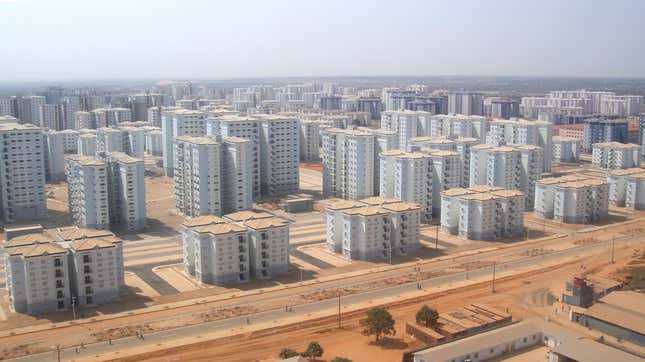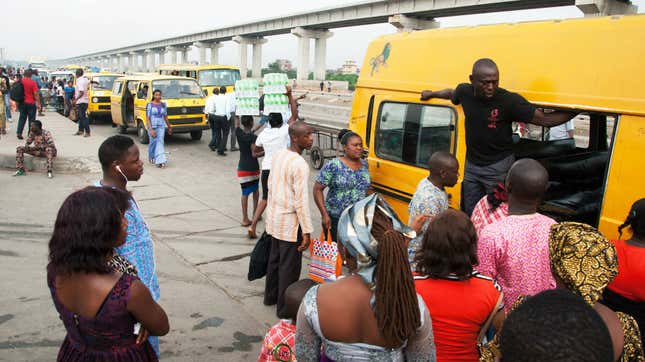It’s easy to see China’s footprint in Africa. On the outskirts of Nairobi, a new highway built by a Chinese firm is crowded with bumper-to-bumper traffic, many of the cars set on tires imported from China. The landscape is dotted with construction sites and, every so often, the logo of another Chinese construction firm. Across the continent, Chinese companies are building highways, railways, sports stadiums, mass housing complexes, and sometimes entire cities.
But China isn’t just providing the manpower to fuel quickly urbanizing African cities. It is exporting its own version of urbanization, creating cities and economic zones that look remarkably similar to Chinese ones. Journalist Michiel Hulsof, based in Amsterdam, and architect Daan Roggeven in Shanghai, began visiting the continent in 2013 to document and investigate whether China’s model of urbanism can work in Africa.
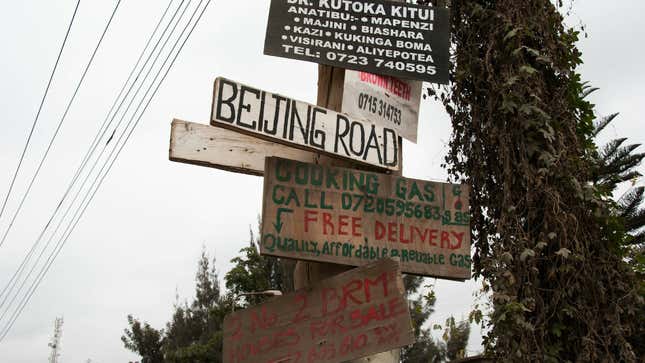
Their conclusion? Doubtful. “Simply put, political and economical realities in Africa and China differ too much for a straight forward ‘copy and paste’ approach,” they wrote in an essay about their project, Facing East: Chinese Urbanism in Africa. “All in all, there seems to be no one single answer to the question of the Chinese urban model ‘working’ in Africa. Sometimes it does, sometimes it doesn’t. And sometimes it doesn’t yet.”
Quartz: You interviewed over a hundred Chinese and African architects, politicians, entrepreneurs and citizens in six African cities. What were you hoping to find?
Daan Roggeveen: Our focus was the influence of China and China’s urban model on Africa’s urbanization, and in particular the way African cities develop. In every city we looked at one or two different research topics—in Nairobi, mass housing, in Addis Ababa, infrastructure and Special Economic Zones, in Lagos, the Special Economic Zone, in Kigali, the idea of Rwanda as the “Singapore of Africa.” For each topic we tried to find people that have a specialist view on these particular subjects, like certain academics, entrepreneurs, journalists, and politicians.

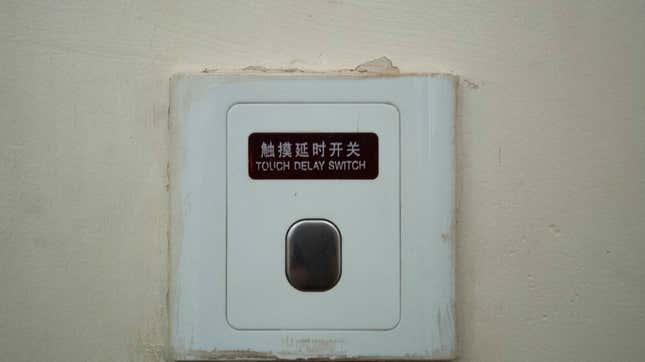
QZ: Were there any responses that surprised you?
DR: In general, people in the places we visited were very precise in their opinions on this topic. The idea that the debate is biased, or pro or contra the Chinese, is simply not the case. The people we met were very well-informed and opinionated. This is not a surprise, but rather something that makes our work inspiring.

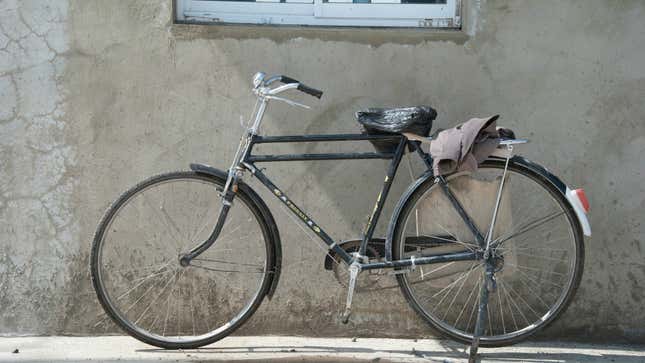
QZ: Do you see similarities between the pace and kind of urbanization in Africa that you do in China?
DR: We all know China’s unprecedented urban transformation, which transformed China from a rural into an urban society in one generation. Now, Africa is urbanizing at the same pace as China did in the past 30 years, but in a process that is less coordinated and aligned. People do not only move to the capitals of African countries, but especially top second and third tier cities.
There are many resemblances. First of all, the speed of urbanisation is similar. But also, the level of energy and dynamism and the ambition for progress in Chinese and African cities are comparable. Driving through the fringe of Nairobi, with its construction sites, road works, traffic jams and advertisements for furniture and processed food one could easily imagine being in the outskirts of a Chinese city.
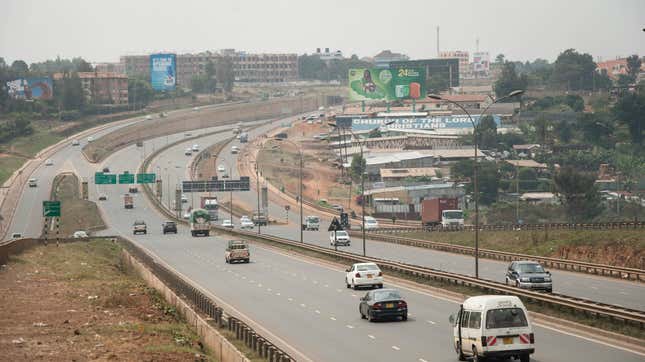
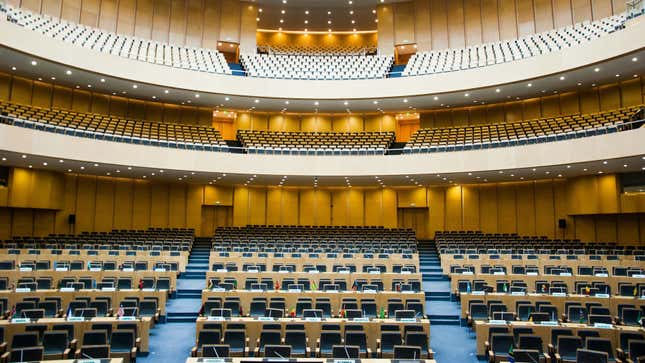
QZ: Did you see or sense any backlash against the level of Chinese involvement?
DR: It’s hard to say about such a vast continent. However, we definitely saw increased competition between Chinese investors and companies in Africa, and other countries like Brazil in India, which are also trying to increase their influence. And of course, the West tries to change its strategy to focus more on business development rather than only aid.

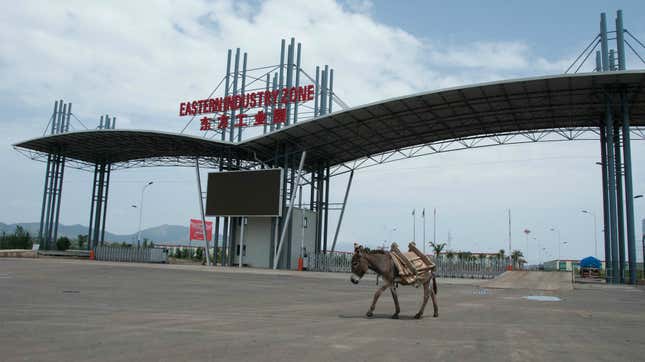
Q: You mention in your exhibit description that the project is built around personal stories of those involved in the urbanization process. Is there a stories that made a particular impression on you?
DR: The story about Cynthia Akatse (see this magazine) was very interesting. She decided to buy a flat in the Great Wall apartments, without knowing it was a Chinese development.
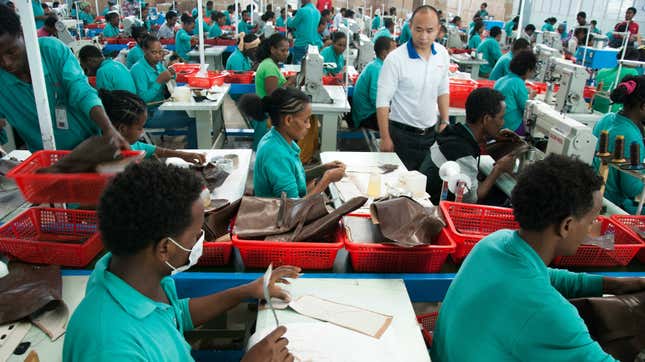
Q: Is there one thing you would like viewers to think about or take away from your exhibit?
DR: I think the most interesting thing is the world is globalizing much faster than many people think, with Western influence drastically changing and international relationships radically shifting.
